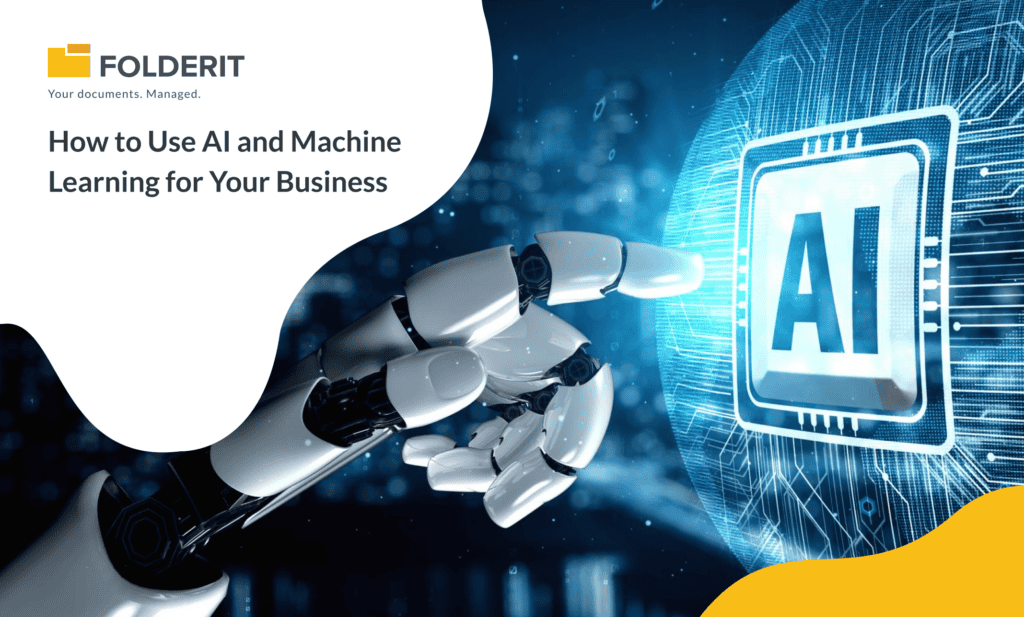Understanding AI and Machine Learning
Artificial Intelligence (AI) and Machine Learning (ML) are transforming how businesses operate. They automate tasks, analyze large data sets, and enhance decision-making processes. These technologies offer significant benefits, like improved efficiency and productivity, which are crucial for staying competitive in today’s market.
Artificial Intelligence (AI)
AI covers a wide range of technologies designed to perform tasks that usually need human intelligence. These tasks include learning, reasoning, problem-solving, and even perception. AI systems can be programmed to do specific tasks or to learn and improve over time by interacting with data.
Machine Learning (ML)
ML, or Machine Learning, is a subset of AI that focuses on creating algorithms that let computers learn from data and make predictions. Instead of being explicitly programmed for a task, ML systems use statistical techniques to find patterns in data and get better over time. This makes ML especially powerful for handling tasks with large and complex data sets.
The Role of Big Data
Big Data: Big data refers to extremely large data sets that can be analyzed to uncover patterns, trends, and associations, especially related to human behavior and interactions. The three main characteristics of big data are volume (the amount of data), variety (the different types of data), and velocity (the speed at which data is generated and processed).
Machine Learning with Big Data
Machine learning excels with big data. The vast amounts of data generated by businesses provide the raw material that ML algorithms need to learn and make accurate predictions. By analyzing big data, ML models can identify patterns and trends that humans would miss, allowing businesses to make data-driven decisions and optimize their operations.
Applications of AI and ML in Business
Document Management
One of the most impactful applications of AI and ML is in document management. These technologies can automate the classification, indexing, and retrieval of documents, greatly reducing the need for manual work and minimizing errors. For example, AI-driven document management systems can automatically categorize and tag documents based on their content, making it easier for employees to find and access the information they need.
Customer Experience
AI and ML can significantly enhance the customer experience by providing personalized and efficient service. AI-powered chatbots and virtual assistants can handle customer inquiries 24/7, offering instant responses and freeing up human agents to deal with more complex issues. Additionally, ML algorithms can analyze customer behavior and preferences to provide personalized recommendations and offers, boosting customer satisfaction and loyalty.
Sales and Marketing
In sales and marketing, AI and ML can analyze customer data to predict buying patterns and optimize marketing strategies. For example, ML algorithms can segment customers based on their purchasing history and target them with personalized promotions, leading to higher conversion rates and increased sales. AI can also automate repetitive tasks like email marketing, allowing sales and marketing teams to focus on more strategic activities.
Use Cases
1. Intelligent Indexing
AI and ML can automate data extraction from documents, making the process more accurate and efficient. For instance, an AI-driven document management system can scan invoices and automatically extract key details like invoice number, date, and amount.
2. Personalized Learning
Educational platforms like Duolingo use ML to tailor learning experiences for each user. By analyzing user progress and behavior, these platforms adjust the difficulty and content of lessons to match individual learning styles and needs.
3. Spam Filters
AI systems can detect and filter out unwanted emails, improving email management. For example, ML algorithms can analyze email content and sender information to spot spam and move it to the junk folder, keeping your inbox clean and organized.
4. Chatbots
AI-driven chatbots provide instant customer support, enhancing user engagement and satisfaction. These chatbots can handle a variety of tasks, from answering common questions to processing orders, reducing the workload on human agents and speeding up response times.
Benefit for Employee Management
AI and ML can also improve employee management by offering insights into employee retention. For example, HR departments can use ML algorithms to analyze engagement data and predict which employees might be at risk of leaving. This enables HR teams to develop targeted retention strategies and interventions, helping to retain top talent and reduce turnover costs.
Key Terms to Know
- Algorithm
A set of rules or steps used to solve problems, essential for creating ML models.
- Deep Learning
A subset of ML that involves neural networks with many layers, capable of learning from vast amounts of data. It’s particularly effective for tasks like image and speech recognition.
- Supervised vs. Unsupervised Learning
Supervised Learning uses labeled data to train models, where the desired output is known. Examples include spam detection and image classification.
Unsupervised Learning identifies patterns in data without predefined labels. Examples include clustering customers into segments for targeted marketing.
- Structured, Unstructured, and Semi-Structured Data
Structured data, such as databases, are highly organized and easily searchable.
Unstructured Data lacks a predefined format, including emails, social media posts, and videos.
Semi-Structured Data contains elements of both, like XML or JSON files.
- Natural Language Processing (NLP)
A field of AI that focuses on the interaction between computers and humans through natural language. NLP enables machines to understand, interpret, and generate human language. Applications include chatbots, sentiment analysis, and language translation.
Implementing AI and ML in Your Business
Identify Opportunities
Assess areas within your business where AI and ML can solve problems or enhance operations. Common areas include customer service, marketing, supply chain management, and HR.
Start Small
Begin with pilot projects to test AI and ML applications on a smaller scale. This allows you to understand the technology’s impact and make necessary adjustments before scaling up.
Build Expertise
Invest in training for your employees or hire experts to manage AI and ML initiatives. Knowledgeable staff can better identify opportunities and implement solutions effectively.
Collaborate with Experts
Partner with AI and ML vendors or consultancies to leverage their expertise. These collaborations can accelerate the implementation process and ensure best practices are followed.
Measure and Iterate
Continuously monitor the performance of AI and ML solutions and make data-driven adjustments. Regularly reviewing outcomes ensures the technology remains aligned with business goals.
Conclusion
AI and ML are game-changing technologies that offer huge benefits for businesses, from automating routine tasks to enhancing customer experiences and providing valuable insights. By understanding the basics of these technologies and strategically using them, businesses can stay competitive and keep innovating.



